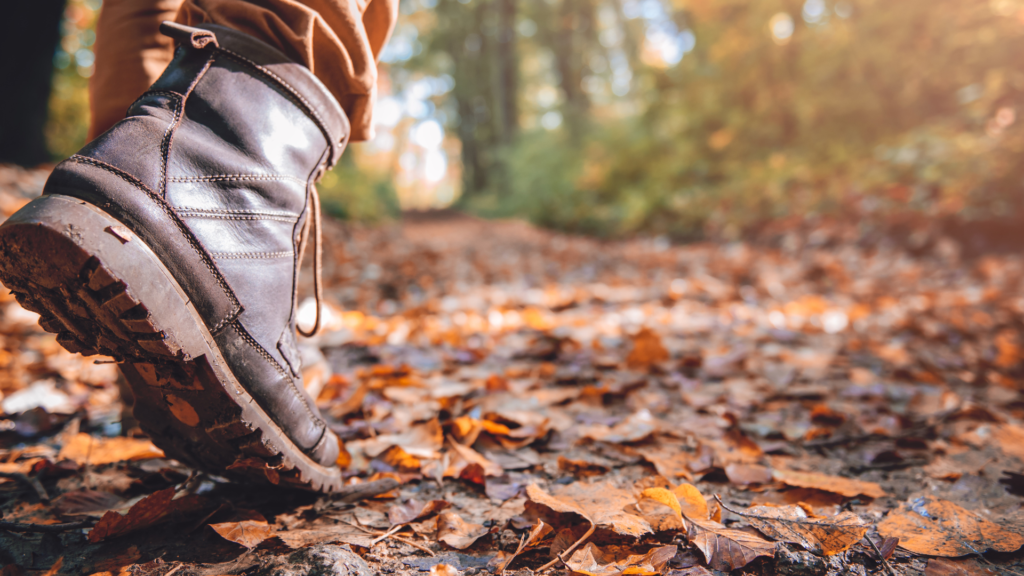Table of Contents
- The Impact of Horse Manure on Trail Ecosystems
- Best Practices for Managing Horse Manure on Hiking Trails
- Environmental Concerns Surrounding Horse Manure on Trails
- The Role of Hikers in Maintaining Clean Trails
- Horse Manure and Trail Safety: What Hikers Need to Know
- Exploring Alternative Solutions to Horse Manure on Trails
- The Debate Over Horse Manure: Perspectives from Hikers and Equestrians
- Case Studies: Successful Trail Management Strategies for Dealing with Horse Manure
- Promoting Awareness and Education on Horse Manure Management for Hikers
- Q&A
Here’s the Scoop: Hikers Debate Over Horse Manure On Trails.
Hikers often find themselves engaged in a debate over the presence of horse manure on trails. While some argue that it is a natural part of the environment and should be left untouched, others believe it poses health and environmental risks. In this article, we will delve into the ongoing debate surrounding horse manure on hiking trails and explore the different perspectives on this matter.
The Impact of Horse Manure on Trail Ecosystems
Hikers and outdoor enthusiasts often find themselves immersed in the beauty of nature, exploring trails that wind through picturesque landscapes. However, amidst the serenity, a debate has emerged over the impact of horse manure on trail ecosystems. Some argue that horse manure is a natural part of the environment and poses no harm, while others believe it can have detrimental effects. In this article, we will delve into the issue and provide an authoritative perspective on the matter.
To understand the impact of horse manure on trail ecosystems, it is essential to consider the composition of this organic waste. Horse manure is rich in nutrients, including nitrogen and phosphorus, which can act as fertilizers for plants. In small quantities, these nutrients can contribute to the growth of vegetation along the trails, enhancing the overall biodiversity. However, when horse populations exceed the carrying capacity of an area, the excessive amount of manure can lead to imbalances in the ecosystem.
One of the main concerns regarding horse manure is its potential to contaminate water sources. When it rains, the nutrients present in the manure can be washed away and enter nearby streams, rivers, or groundwater. This can result in an overabundance of nutrients in the water, leading to algal blooms and oxygen depletion. These harmful effects can disrupt aquatic ecosystems and harm fish and other aquatic organisms.
Furthermore, the presence of horse manure on trails can impact the overall aesthetics and experience for hikers. While some may argue that it is a natural occurrence, others find it unsightly and unpleasant. The smell and visual impact of horse manure can detract from the enjoyment of the trail and discourage visitors from returning. This can have economic implications for local communities that rely on tourism revenue.
In addition to water contamination and aesthetic concerns, horse manure can also introduce non-native plant species to trail ecosystems. Seeds from plants consumed by horses can pass through their digestive system unharmed and be deposited along the trails through their manure. These seeds can then germinate and compete with native plant species, potentially leading to a decline in biodiversity and altering the natural balance of the ecosystem.
To mitigate the impact of horse manure on trail ecosystems, several measures can be implemented. One approach is to limit the number of horses allowed on trails, ensuring that the carrying capacity of the area is not exceeded. This can help prevent the accumulation of excessive manure and reduce the risk of water contamination. Additionally, regular trail maintenance, including the removal of manure, can help maintain the aesthetics of the trail and enhance the overall experience for hikers.
Education and awareness campaigns can also play a crucial role in addressing this issue. By informing horse owners and trail users about the potential consequences of horse manure, they can make more informed decisions and take responsibility for their actions. Encouraging the use of designated areas for horse waste disposal, such as composting facilities, can also help minimize the impact on trail ecosystems.
In conclusion, the debate over horse manure on trails is a complex issue with both ecological and aesthetic considerations. While horse manure can provide nutrients to the environment in small quantities, excessive amounts can lead to water contamination, introduce non-native plant species, and detract from the overall trail experience. By implementing measures such as limiting horse populations, regular trail maintenance, and education campaigns, we can strike a balance between preserving the natural beauty of our trails and accommodating the needs of horse enthusiasts.
Best Practices for Managing Horse Manure on Hiking Trails
Hiking is a popular outdoor activity that allows people to connect with nature and enjoy the beauty of the great outdoors. However, one issue that has sparked a heated debate among hikers is the presence of horse manure on hiking trails. Some hikers argue that horse manure is a nuisance and should be removed from the trails, while others believe that it is a natural part of the environment and should be left alone. In this article, we will explore the best practices for managing horse manure on hiking trails, providing an authoritative perspective on the matter.
First and foremost, it is important to understand that horse manure is a natural byproduct of horses being on the trails. Horses have been used for transportation and recreation for centuries, and their presence on hiking trails is not a new phenomenon. Therefore, it is unrealistic to expect that horse manure can be completely eliminated from hiking trails. However, there are steps that can be taken to minimize its impact.
One of the best practices for managing horse manure on hiking trails is for horseback riders to be responsible for cleaning up after their horses. This means carrying a small shovel or scoop and removing any manure that is left behind. This not only helps to keep the trails clean and enjoyable for all users but also demonstrates respect for the environment and other hikers.
In addition to cleaning up after their horses, horseback riders should also be mindful of where they ride. It is important to stay on designated trails and avoid riding through sensitive areas such as wetlands or meadows. By sticking to established trails, horseback riders can minimize the spread of horse manure and reduce its impact on the environment.
For hikers who encounter horse manure on the trails, it is important to remember that it is not harmful to humans. Horse manure is composed of organic matter and will break down over time. However, if you prefer to avoid stepping in it, it is best to watch where you are walking and be aware of your surroundings. This is especially important on narrow or heavily trafficked trails where it may be more difficult to avoid.
Another best practice for managing horse manure on hiking trails is for land managers to provide adequate facilities for horseback riders. This includes designated areas for parking trailers and horses, as well as facilities for disposing of manure. By providing these amenities, land managers can encourage responsible horseback riding and minimize the impact of horse manure on hiking trails.
Ultimately, the debate over horse manure on hiking trails is a complex issue with valid arguments on both sides. While it is unrealistic to expect horse manure to be completely eliminated from hiking trails, there are steps that can be taken to minimize its impact. By practicing responsible horseback riding, cleaning up after horses, and providing adequate facilities, we can ensure that hiking trails remain enjoyable for all users. So, the next time you encounter horse manure on a hiking trail, remember the scoop and the best practices for managing it.
Environmental Concerns Surrounding Horse Manure on Trails
Hikers and outdoor enthusiasts often find themselves immersed in the beauty of nature, exploring trails that wind through picturesque landscapes. However, amidst the serenity of these trails, a debate has emerged regarding the presence of horse manure. Some argue that it is a natural part of the environment, while others express concerns about its impact on the ecosystem. In this article, we will delve into the environmental concerns surrounding horse manure on trails and provide an authoritative perspective on the matter.
First and foremost, it is important to acknowledge that horse manure is indeed a natural byproduct of horses. As herbivores, horses consume vegetation, and their digestive systems break down the plant matter, resulting in the production of manure. In the wild, this manure would serve as a valuable source of nutrients for the soil, aiding in the growth of plants and contributing to the overall health of the ecosystem.
However, when it comes to trails frequented by hikers, the situation becomes more complex. The concentrated presence of horse manure can lead to an accumulation that may not be beneficial to the surrounding environment. One of the primary concerns is the potential contamination of water sources. Rainfall can wash away the manure, carrying with it harmful bacteria and pathogens into nearby streams and rivers. This poses a risk to both aquatic life and humans who rely on these water sources.
Furthermore, the decomposition process of horse manure can contribute to the release of greenhouse gases, particularly methane. Methane is a potent greenhouse gas that significantly contributes to climate change. As the manure breaks down, methane is released into the atmosphere, exacerbating the already pressing issue of global warming. This is a concern that cannot be overlooked, especially in the face of the urgent need to reduce our carbon footprint.
In addition to the environmental concerns, there are also practical considerations to take into account. Hikers often encounter horse manure on trails, and stepping in it can be both unpleasant and unhygienic. This can be particularly problematic for those with compromised immune systems or open wounds, as exposure to the bacteria present in the manure can lead to infections and other health issues.
So, what can be done to address these concerns? One possible solution is the implementation of proper trail management practices. This includes regular maintenance and cleaning of trails to remove accumulated horse manure. Additionally, educating horse owners and riders about the importance of responsible waste management can go a long way in minimizing the impact of horse manure on trails.
Furthermore, the use of composting techniques can be explored as a means of managing horse manure. Composting allows for the controlled decomposition of organic matter, including manure, in a way that minimizes the release of harmful gases and pathogens. By turning horse manure into nutrient-rich compost, it can be repurposed as a valuable resource for gardening and agriculture, rather than posing a threat to the environment.
In conclusion, the debate surrounding horse manure on trails is a complex one, with valid arguments on both sides. While horse manure is a natural byproduct, its concentrated presence on trails can have detrimental effects on the environment, water sources, and human health. By implementing proper trail management practices and exploring composting techniques, we can strike a balance between enjoying the beauty of nature and preserving its delicate ecosystem. It is crucial that we address these environmental concerns surrounding horse manure on trails to ensure the sustainability and longevity of our natural landscapes.
The Role of Hikers in Maintaining Clean Trails

Hiking is a popular outdoor activity that allows individuals to connect with nature and enjoy the beauty of the great outdoors. However, as more and more people hit the trails, a debate has emerged regarding the presence of horse manure on hiking trails. Some hikers argue that horse manure is a natural part of the environment and should be left untouched, while others believe that it poses a health and environmental risk and should be removed. In this article, we will explore the role of hikers in maintaining clean trails and provide an authoritative perspective on the issue.
First and foremost, it is important to acknowledge that horse manure is indeed a natural part of the environment. Horses have been used for transportation and recreation for centuries, and their waste has always been a byproduct of their presence. In fact, horse manure is rich in nutrients and can serve as a natural fertilizer for plants and vegetation along the trails. This is why some hikers argue that it should be left untouched, as it contributes to the overall health and vitality of the ecosystem.
However, it is also crucial to consider the potential health and environmental risks associated with horse manure on hiking trails. Horse manure can contain harmful bacteria and parasites that can pose a risk to humans and wildlife. For example, the bacteria E. coli and Salmonella can be present in horse manure and can cause serious illnesses if ingested. Additionally, the parasites found in horse manure can infect other animals and disrupt the delicate balance of the ecosystem.
Given these potential risks, it is understandable why some hikers advocate for the removal of horse manure from hiking trails. They argue that by removing the manure, they are not only ensuring the safety of themselves and others but also protecting the environment from potential harm. This perspective emphasizes the responsibility of hikers in maintaining clean and safe trails for everyone to enjoy.
So, what is the best approach for hikers when it comes to horse manure on trails? The answer lies in finding a balance between preserving the natural environment and ensuring the safety and well-being of hikers and wildlife. One possible solution is for hikers to practice Leave No Trace principles, which encourage individuals to minimize their impact on the environment. This can include avoiding areas with excessive horse manure, stepping around it when possible, and reporting any areas with a significant accumulation to trail maintenance organizations.
Furthermore, hikers can also play a role in educating others about the potential risks associated with horse manure and the importance of maintaining clean trails. By spreading awareness and encouraging responsible hiking practices, hikers can contribute to a culture of cleanliness and safety on the trails.
In conclusion, the debate over horse manure on hiking trails is a complex issue that requires careful consideration. While horse manure is a natural part of the environment and can contribute to the health of the ecosystem, it also poses potential health and environmental risks. Hikers have a role to play in maintaining clean trails by practicing Leave No Trace principles and educating others about responsible hiking practices. By finding a balance between preserving the natural environment and ensuring the safety of hikers and wildlife, we can all contribute to the enjoyment and sustainability of our hiking trails.
Horse Manure and Trail Safety: What Hikers Need to Know
Horse Manure and Trail Safety: What Hikers Need to Know
Hiking is a popular outdoor activity that allows people to connect with nature and enjoy the beauty of the great outdoors. However, one issue that often sparks debate among hikers is the presence of horse manure on trails. Some hikers argue that horse manure is a nuisance and a safety hazard, while others believe it is a natural part of the environment and should be left undisturbed. In this article, we will explore both sides of the argument and provide some insights into how hikers can navigate trails safely.
First and foremost, it is important to acknowledge that horse manure is a natural byproduct of horses being on the trails. Horses have been used for transportation and recreation for centuries, and their presence on trails is not a new phenomenon. As such, it is unrealistic to expect trails to be completely free of horse manure. However, this does not mean that hikers should simply accept the presence of horse manure without question.
One of the main concerns hikers have regarding horse manure is the potential for slipping and falling. Fresh horse manure can be slippery, especially when it is wet, and this can pose a safety risk for hikers. Additionally, horse manure can be difficult to spot, especially if it is covered by leaves or other debris. This means that hikers may inadvertently step on horse manure and lose their footing, potentially leading to injuries.
To mitigate this risk, hikers should always be vigilant and watch their step while on the trails. It is important to scan the ground ahead and be aware of any potential hazards, including horse manure. Wearing appropriate footwear with good traction can also help hikers maintain their balance and reduce the risk of slipping. Furthermore, hikers should consider using trekking poles for added stability, especially on uneven terrain.
Another concern hikers have regarding horse manure is the potential for the spread of diseases. Horse manure can contain parasites and bacteria that can be harmful to humans. While the risk of contracting a disease from horse manure is relatively low, it is still important to take precautions. Hikers should always wash their hands thoroughly after coming into contact with horse manure and avoid touching their face or mouth while on the trails. Carrying hand sanitizer can also be a good idea, especially if there are no facilities for handwashing available.
In conclusion, the presence of horse manure on trails is a topic that sparks debate among hikers. While it is unrealistic to expect trails to be completely free of horse manure, hikers should still take precautions to ensure their safety. Being vigilant, wearing appropriate footwear, and using trekking poles can help hikers navigate trails safely and reduce the risk of slipping and falling. Additionally, hikers should be mindful of the potential for the spread of diseases and take appropriate hygiene measures. By being aware of these considerations, hikers can continue to enjoy the beauty of the great outdoors while staying safe on the trails.
Exploring Alternative Solutions to Horse Manure on Trails
Hikers Debate Over Horse Manure On Trails. Here’s the Scoop.
Horseback riding is a popular outdoor activity enjoyed by many nature enthusiasts. However, the presence of horse manure on trails has sparked a heated debate among hikers. While some argue that it is a natural part of the ecosystem and should be left untouched, others believe that it poses a health and environmental hazard. In this article, we will explore alternative solutions to the issue of horse manure on trails.
One of the main concerns raised by hikers is the potential health risks associated with horse manure. It is well-known that horse feces can contain harmful bacteria and parasites, such as E. coli and salmonella. These pathogens can pose a threat to humans, especially if they come into contact with the manure or accidentally ingest it. Additionally, the strong odor of horse manure can be unpleasant and detract from the overall hiking experience.
To address these concerns, some hikers propose implementing stricter regulations for horseback riders. This could include requiring riders to clean up after their horses or providing designated areas for horses to relieve themselves. By holding riders accountable for their horses’ waste, hikers believe that the health risks associated with horse manure can be minimized.
Another alternative solution is the use of biodegradable bags or compostable materials to collect horse manure. These bags could be provided at trailheads or rented out to riders, making it easier for them to clean up after their horses. The collected manure could then be properly disposed of or used as fertilizer in designated areas. This approach not only addresses the health concerns but also promotes environmental sustainability.
Furthermore, some hikers suggest the use of technology to tackle the issue of horse manure on trails. For instance, drones equipped with cameras could be used to monitor popular horseback riding trails and identify areas with excessive manure buildup. This information could then be shared with riders and park authorities, enabling them to take appropriate action. Additionally, GPS tracking devices could be attached to horses to track their movements and ensure that riders are adhering to designated routes.
While these alternative solutions offer potential ways to mitigate the issue of horse manure on trails, it is important to consider the perspectives of horseback riders as well. Many riders argue that horse manure is a natural part of the ecosystem and serves as a fertilizer for plants and vegetation. They believe that removing or cleaning up the manure disrupts the natural balance of the environment.
To find a middle ground, some hikers and riders propose the establishment of designated horse trails separate from hiking trails. This would allow riders to enjoy their activity without causing inconvenience or health risks to hikers. By creating a clear division between the two groups, both hikers and riders can coexist harmoniously in outdoor recreational areas.
In conclusion, the debate over horse manure on trails continues to divide hikers and horseback riders. While some argue for stricter regulations and the use of technology to address the issue, others believe that horse manure is a natural part of the ecosystem. Exploring alternative solutions, such as designated horse trails and the use of biodegradable bags, can help strike a balance between the concerns of hikers and the needs of horseback riders. Ultimately, finding a solution that respects both perspectives is crucial for maintaining the enjoyment and safety of outdoor recreational activities.
The Debate Over Horse Manure: Perspectives from Hikers and Equestrians
Hikers and equestrians have long been engaged in a heated debate over the presence of horse manure on trails. While some hikers argue that it is unsightly and poses a health hazard, equestrians maintain that it is a natural byproduct of their activities and does not cause any harm. In this article, we will explore both perspectives to shed light on this ongoing debate.
Hikers who oppose the presence of horse manure on trails often argue that it is an eyesore and detracts from the natural beauty of the surroundings. They believe that trails should be kept clean and free of any waste, including horse droppings. Additionally, some hikers express concerns about the potential health risks associated with horse manure. They worry that it may contain harmful bacteria or parasites that could be transmitted to humans or other animals.
On the other hand, equestrians argue that horse manure is a natural byproduct of their activities and should be accepted as such. They contend that horses have been used for transportation and recreation for centuries, and their waste is a part of the natural ecosystem. Equestrians also point out that horse manure is biodegradable and eventually breaks down, returning nutrients to the soil. They argue that removing horse manure from trails would be an unnecessary and time-consuming task.
To address the concerns raised by hikers, equestrians often take steps to minimize the impact of horse manure on trails. Many equestrian organizations encourage their members to clean up after their horses by carrying small shovels or bags to collect the waste. Some equestrians even go a step further and use specially designed horse diapers or manure catchers to prevent droppings from falling onto the trail. These efforts demonstrate that equestrians are aware of the concerns raised by hikers and are willing to take responsibility for their horses’ waste.
It is worth noting that the impact of horse manure on trails may vary depending on the location and the number of horses using the trail. In heavily trafficked areas, the accumulation of horse manure can be more noticeable and potentially problematic. However, in less frequented areas, the natural processes of decomposition and dispersion may be sufficient to mitigate any concerns.
Ultimately, finding a solution that satisfies both hikers and equestrians may require a compromise. One possible approach could involve designated horse trails where equestrians are allowed to ride freely, while other trails are designated for hikers only. This would allow hikers to enjoy clean and manure-free trails while still accommodating equestrians and their horses.
In conclusion, the debate over horse manure on trails is a complex issue with valid arguments on both sides. Hikers who oppose its presence argue that it is unsightly and poses health risks, while equestrians maintain that it is a natural byproduct that should be accepted. By taking steps to minimize the impact of horse manure and exploring compromises, it is possible to find a solution that satisfies both parties. Ultimately, the goal should be to preserve the natural beauty of trails while accommodating the diverse recreational activities that take place on them.
Case Studies: Successful Trail Management Strategies for Dealing with Horse Manure
Hikers and horseback riders have long shared the trails, but one issue that has sparked heated debates is the presence of horse manure on the trails. While some hikers argue that horse manure is unsightly and poses a health risk, others believe that it is a natural part of the environment and should be left untouched. In this article, we will explore successful trail management strategies for dealing with horse manure, based on case studies from various trail systems.
One trail system that has effectively managed horse manure is the Appalachian Trail. With over 2,000 miles of trail spanning 14 states, the Appalachian Trail Conservancy has implemented a comprehensive strategy to address the issue. They have designated specific areas along the trail where horseback riders are allowed, and these areas are regularly maintained to minimize the impact of horse manure. Additionally, the conservancy has installed signage to educate hikers about the presence of horseback riders and the importance of coexistence.
Another successful case study comes from the Pacific Crest Trail, which stretches over 2,600 miles from Mexico to Canada. The Pacific Crest Trail Association has implemented a similar strategy to the Appalachian Trail Conservancy. They have designated specific sections of the trail for horseback riders and have implemented regular maintenance to keep these areas clean. The association also works closely with local equestrian groups to ensure that riders are aware of their responsibilities in managing horse manure.
In both of these case studies, education plays a crucial role in managing horse manure on the trails. By informing hikers about the presence of horseback riders and the importance of coexistence, trail organizations have been able to foster a greater understanding and acceptance of horse manure. This education also extends to horseback riders, who are made aware of their responsibilities in managing horse manure and keeping the trails clean.
While designated areas and education are effective strategies, some trail systems have taken a different approach. The Colorado Trail, for example, has implemented a “pack it in, pack it out” policy for horse manure. This means that horseback riders are responsible for carrying out their horse’s waste and disposing of it properly. This strategy has been successful in minimizing the presence of horse manure on the trail and reducing the impact on the environment.
In conclusion, the issue of horse manure on hiking trails has sparked debates among hikers and horseback riders. However, through successful trail management strategies, such as designated areas, education, and “pack it in, pack it out” policies, trail organizations have been able to effectively address the issue. By implementing these strategies, they have minimized the impact of horse manure on the trails and fostered a greater understanding and acceptance among hikers and horseback riders. Ultimately, it is through cooperation and responsible trail use that we can ensure the enjoyment and preservation of our natural spaces for future generations.
Promoting Awareness and Education on Horse Manure Management for Hikers
Hikers are no strangers to encountering various obstacles and challenges while exploring the great outdoors. From steep inclines to unpredictable weather conditions, they have learned to adapt and overcome. However, one issue that has sparked a heated debate among hikers is the presence of horse manure on trails. Some argue that it is a natural part of the environment and should be left untouched, while others believe it poses a health risk and should be removed. In order to promote awareness and education on horse manure management for hikers, it is important to understand both sides of the argument.
Those who advocate for leaving horse manure on trails argue that it is a natural fertilizer that helps nourish the surrounding vegetation. They believe that removing it disrupts the delicate balance of the ecosystem and can have negative consequences for plant life. Additionally, they argue that horse manure is biodegradable and will eventually break down on its own, so there is no need for hikers to intervene.
On the other hand, those who advocate for removing horse manure from trails raise concerns about the potential health risks it poses. Horse manure can contain harmful bacteria and parasites that can be transmitted to humans through contact or ingestion. This can lead to various illnesses, including gastrointestinal infections and even more serious conditions such as E. coli or salmonella poisoning. Furthermore, the presence of horse manure can attract flies and other pests, which can further contribute to the spread of disease.
To address these concerns, hikers should be educated on proper horse manure management. This includes understanding the potential risks associated with horse manure and taking necessary precautions. Hikers should always wash their hands thoroughly after coming into contact with horse manure and avoid touching their faces or consuming food until they have had a chance to clean up. It is also important to be aware of any signs or symptoms of illness and seek medical attention if necessary.
In addition to personal hygiene practices, hikers can also play a role in minimizing the impact of horse manure on trails. One way to do this is by practicing Leave No Trace principles, which encourage hikers to minimize their impact on the environment. This includes packing out any trash, including horse manure, and disposing of it properly. Hikers can also consider using designated horse trails or areas where horse manure is more likely to be managed and maintained.
Furthermore, hikers can advocate for better horse manure management practices by engaging with local trail organizations and government agencies. By raising awareness about the issue and expressing their concerns, hikers can encourage the implementation of policies and regulations that promote responsible horse manure management. This can include measures such as regular trail maintenance and the installation of waste disposal facilities for horse owners.
In conclusion, the debate over horse manure on trails is a complex issue that requires careful consideration. While some argue that it is a natural part of the environment and should be left untouched, others raise concerns about the potential health risks it poses. To promote awareness and education on horse manure management for hikers, it is important to understand both sides of the argument and take necessary precautions. By practicing proper hygiene, minimizing their impact on the environment, and advocating for better horse manure management practices, hikers can help ensure a safe and enjoyable outdoor experience for all.
Q&A for Hikers Debate Over Horse
1. What is the debate about?
The debate is about horse manure on hiking trails.
2. Why is there a debate?
Some hikers believe that horse manure is a natural part of the environment and should be left on the trails, while others argue that it is unsightly and can pose health risks.
3. What are the arguments in favor of leaving horse manure on trails?
Proponents argue that horse manure is biodegradable, provides nutrients to the soil, and is a natural part of the ecosystem.
4. What are the arguments against leaving horse manure on trails?
Opponents argue that horse manure can spread diseases, attract pests, and create an unpleasant hiking experience.
5. Are there any regulations regarding horse manure on trails?
Regulations vary by location, but some areas have rules in place that require horse owners to clean up after their animals.
6. How can horse manure be managed on trails?
Options include using designated horse trails, implementing regular clean-up efforts, or using biodegradable bags to collect and dispose of the manure.
7. Are there any alternatives to horse manure on trails?
Some equestrians use manure catchers or diapers on their horses to prevent manure from falling on the trails.
8. What are the potential health risks associated with horse manure on trails?
Horse manure can contain bacteria, parasites, and pathogens that may pose health risks to humans and other animals.
9. What is the overall impact of horse manure on hiking trails?
The impact of horse manure on hiking trails depends on various factors, including the number of horses, trail usage, and management practices.In conclusion, the debate among hikers regarding horse manure on trails is a contentious issue. While some argue that horse manure is a natural part of the environment and should be left untouched, others believe it poses health and environmental risks. Finding a balance between preserving the natural ecosystem and ensuring a clean and safe hiking experience is crucial. Proper trail management, education, and cooperation between hikers and equestrians are necessary to address this issue effectively.
Resources
Environmental Impact
- Nutrient Enrichment:
- Horse manure adds nitrogen and phosphorus to the soil, which can lead to over-fertilization and ecological imbalances.
- Resource: Impact of Horse Manure on Trails
- Soil Erosion:
- Increased foot and hoof traffic in areas with manure can lead to soil compaction and increased erosion.
- Resource: Trail Erosion Research
Health Considerations
- Pathogens: There is potential for pathogen transmission (e.g., from bacteria in manure), which can be concerning for both human health and animal health.
- Resource: Equine Management and Trail Use
User Perspectives
- Hikers:
- Concerns about cleanliness, aesthetic value, and possible slip hazards due to manure on trails.
- Resource: Opinions on hiking forums such as AllTrails.
- Horseback Riders:
- Position that manure is a natural part of trail use, and proper trail etiquette and management can minimize issues (e.g., leaving manure near the trail).
- Resource: Managing Manure on Trails
Management Strategies
- Educational Programs: Discuss initiatives that educate both hikers and horseback riders on best practices for trail sharing.
- Regular Maintenance: Importance of trail maintenance programs and the role of volunteers in cleaning up trails.
- Resource: Sustainable Trail Management Practices
Case Studies and Examples
Specific Hiking Areas and Parks
- Sierra National Forest, California
- Overview of Trails: Sierra National Forest
- Horse Trail Information: Sierra National Forest Horse Trails
- Blue Ridge Parkway, North Carolina/Virginia
- Trail Information: Blue Ridge Parkway Hiking
- Visitor Information: Blue Ridge Parkway Visitor Center
- Great Smoky Mountains National Park, Tennessee/North Carolina
- Horse Trails: Great Smoky Mountains Horseback Riding
- Trail Information: Hikes in the Great Smokies
- Custer State Park, South Dakota
- Park Overview: Custer State Park
- Horse Trails: Horse Trails at Custer State Park
- Capitol Reef National Park, Utah
- Visitor Information: Capitol Reef National Park
- Trail Information: Capitol Reef Hiking Trails
- Mount Rainier National Park, Washington
- Trail Information: Mount Rainier National Park Trails
- Horseback Riding Information: Equestrian Activities in Mount Rainier
- Virginia’s Natural Bridge State Park
- Park Overview: Natural Bridge State Park
- Trail Information: Natural Bridge Hiking Trails
- Rocky Mountain National Park, Colorado
- Visitor Information: Rocky Mountain National Park
- Horseback Riding: Rocky Mountain National Park Equestrian
Additional Resources
- AllTrails: For user reviews and additional information on trails wherein horse manure issues may be discussed: AllTrails.
- TrailLink: It provides trail maps and user experiences: TrailLink.
These links will give you access to detailed information about each park, including trail management, user experiences, and available resources for both hikers and horseback riders.
- Resource: Local environmental or park service websites, e.g., National Park Service.
![]()










